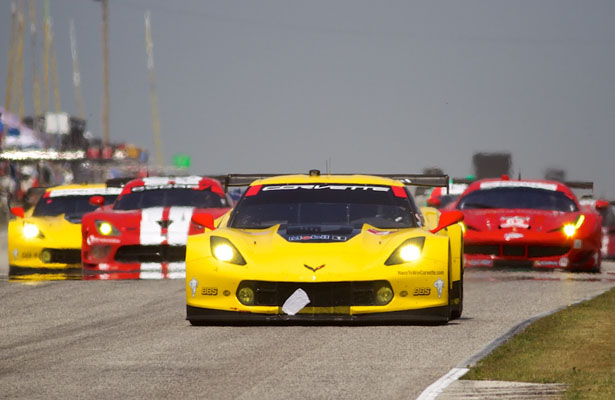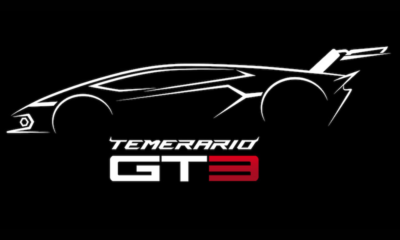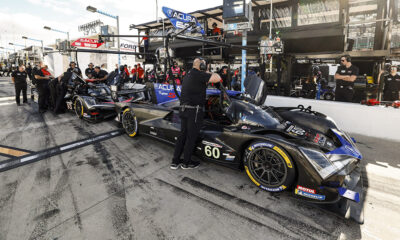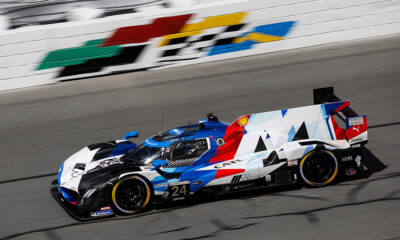
Photo: John Dagys
Balance of Performance has been a major talking point in the TUDOR United SportsCar Championship all season, but with only three races to go, any change at this late stage could arguably play a factor in the outcome of the championship, particularly in GT Le Mans and GT Daytona.
While no adjustments have been made to the production-based ranks in the last two races, a recent update to the IMSA rulebook, approved by manufacturers, has allowed for one additional performance adjustment to be made before the end of the year.
According to IMSA’s VP of Competition and Technical Regulations, Scot Elkins, that adjustment will likely come following this weekend’s Oak Tree Grand Prix in the run-up to the Lone Star Le Mans weekend at Circuit of The Americas.
“We’re doing a thorough analysis of everything, going through everything we can come up with,” Elkins told Sportscar365. “We’re even looking at the season overall, not just the last race, to try to get ourselves set up going into COTA and Petit [Le Mans] for the final AoP before that.”
It’s understood a handful of manufacturers, supporting entries in either GTLM and/or GTD, have voiced serious concerns to IMSA over the current BoP situation, although Elkins said no considerations were made for adjustments heading into this weekend.
“If you look at the last race, it was pretty good,” he said. “What we’re seeing a little bit of right now is that we’ve got the lap times within the windows we like. We’re dealing again with magical phrase of race-ability.
“We’re having conversations with people saying, ‘We’ve got a smaller restrictor but could we get a little bit more restrictor and add some weight on the car to make it race better?’
“That’s what’s taking a little bit more time and causing us to go through more thorough analysis. Lap times look pretty good, we’re just trying to make the racing better. That’s the most difficult part of any of this stuff as everyone can see so far.”
With Risi Competizione breaking through for its first win of the season at Road America, GTLM has seen four of the five manufacturers visit victory lane this year, although Corvette Racing has seen its points lead cut in half since it was handed a 25 kg minimum weight increase, and other cars given concessions, prior to last month’s Brickyard Grand Prix.
The points race has also tightened up in GTD, with only three points now separating the AIM Autosport Ferrari from Alex Job Racing’s Porsche. Ferrari and BMW both have three class wins this season, with Dodge and Porsche at one a piece, but Audi has yet to visit victory lane.
Elkins said the next BoP (or AoP, as IMSA calls it) update will take data from the entire season to date.
“It’s giving us the opportunity to do a season-long evaluation,” he said. “It’s easy. We’ve done an analysis for the full season and we’ll go back and do an analysis after each major AoP change that we’ve done. We can tell where those are.
“We made significant changes in GTD at one point and made some significant changes in GTLM at one point. So we can go back and see what the results of those were to try to get us to the final setup for the last change that we need to do.”
Elkins expects changes to the BoP procedure for next year, including the possibility of a Daytona-specific package for GTLM cars, similar to what was enforced for Prototype and Prototype Challenge in the 24-hour race this year.
He said there’s currently discussions within the FIA and ACO to lock down the GTE regulations for next year’s 24 Hours of Le Mans, based on the FIA’s latest round of BoP adjustments that will go into effect beginning in next month’s FIA WEC race at COTA.
IMSA could adopt that same configuration for Daytona, which would include the low-drag aero kits outfitted on the GTE-spec machines.
“If that’s the case, it would help all of our GTLM teams that want to run at Le Mans,” Elkins said. “It helps the ACO and FIA to see data from Daytona. That’s all a part of the discussion and I think we’ll sort some of that out in the [manufacturers] meetings at the end of September.
“It will also gives us the position to clearly define the AoP going into the Roar test, so there’s not any changes between the Roar and the race to help us try to cut out the sandbagging and those other things.”























